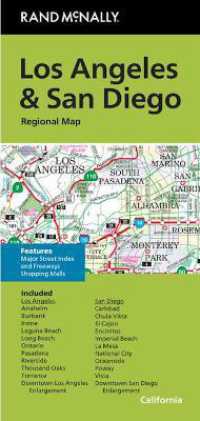- ホーム
- > 洋書
- > 英文書
- > Literary Criticism
基本説明
Drawing on a material from previously secret archives, this study explores how theatre was censored in the GDR from 1961 to 1989.
Full Description
Despite all the evidence to the contrary, the authorities in the German Democratic Republic always denied that they practised censorship. In this fascinating new study, Laura Bradley explores how the authorities' denial affected the language and experience of theatre censorship. She shows that it left theatre practitioners doubly exposed: they remained officially responsible for their productions, even if the productions had passed pre-performance controls. In the absence of a fixed set of criteria, cultural functionaries had to make difficult judgements about which plays and productions to allow, and where to draw the line between constructive criticism and subversion. Drawing on a wealth of new archive material, the study explores how theatre practitioners and functionaries negotiated these challenges between 1961 and 1989. The chapters in Part I explore theatre censorship in East Berlin, asking how the controls affected different genres, and how theatre practitioners responded to the construction of the Berlin Wall, the Prague Spring, and the expatriation of Wolf Biermann. Part II broadens the focus to the regions, investigating why theatre practitioners complained of strong regional variations in theatre censorship, and how they responded to Mikhail Gorbachev's policies of glasnost and perestroika. By examining a range of case studies, from banned stagings to those that met with official approval, the book puts high-profile disputes back into context. It shows how censorship operated through human negotiation, illuminating the shifting patterns of cooperation and conflict that influenced the space available for theatrical experimentation.
Contents
LIST OF ILLUSTRATIONS ; LIST OF ABBREVIATIONS ; ADMINISTRATIVE MAP OF THE GDR ; 1. Introduction ; PART I: THEATRE CENSORSHIP IN EAST BERLIN ; 2. Contemporary drama in the 1960s: a contested space ; 3. The Prague Spring: allegories and allusions ; 4. Heine, Kleist, and Buchner in the 1970s ; PART II: THEATRE CENSORSHIP IN THE REGIONS ; 5. Political patchwork? Regional experiences of theatre censorship ; 6. Schwerin and Anklam in the early 1980s: cooperation and conflict ; 7. Dresden and Bautzen in the late 1980s: performing perestroika ; 8. Conclusion ; REFERENCES ; INDEX






